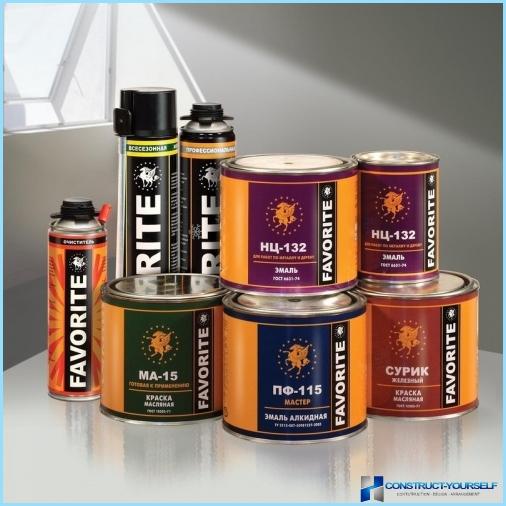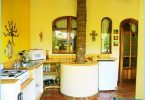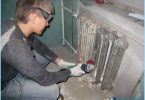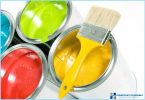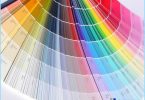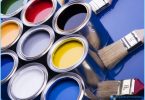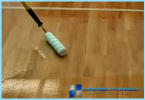The contents
- The types of coatings and their components
- Common symbols for marking paints
- Description and marking of emulsion paints
- Types of coatings alkyd group
Paint made on modern technologies, is a complex combination of different chemical elements. To understand the purpose of the product applied marking paint, which allows to determine its composition.
The types of coatings and their components ↑
Binders of natural or synthetic origin are the basis for the LMB. Their function is to form a durable film on the painted surface. As binders are natural resins, vegetable oils and substances of protein origin. Synthetic substances presented in the form of perchlorovinyl, alkyd-urethane resins, acrylate and its copolymers, liquid glass, etc. This information must be reflected in the marking of the paints in the form of letter symbols.
For turning basics into a full-fledged product, there was added:
- the pigments responsible for giving the paint a certain color;
- thickeners;
- fillers;
- driers;
- biocides involved in combating fungi and microorganisms.
These constituent elements or the result of their actions shall be subject to obligatory reflection in the marking paint.
All the variety of coatings can be divided into four large groups:
- alkyd;
- emulsion;
- silicone;
- glue.
Each of the major groups has features marking paint and are divided into subgroups.
Common symbols marking paints ↑
All products are a certain set of letters and numbers, marking order of colors is determined by the group to which they belong. First, consider the common symbols. The first two letters identify the type of binder element the LMB:
- AD – polyamide;
- AK – based polyacrylates are applied;
- AU – alkyd-urethane;
- As copolymers of polyacrylate;
- AC – acetate;
- BT – bituminous;
- VA – polyvinyl acetate;
- EXT – base – vinyls and vinylacetate;
- All – copolymers of polyvinyl acetate;
- GF – glyptal resin;
- ZHS – silicate;
- KF rosin;
- CO – organosilicone resin;
- KCH – rubber;
- MA of vegetable oil;
- ML – melaminoalkidnye;
- NC – nitrocellulose;
- PF – pentaftalevye resin;
- UR – polyurethane;
- FA – phenologically;
- VCM – vinyl chloride;
- SHL – shellac;
- EP – epoxy resin;
- EC – ethylcellulose;
- YAN amber resin.
Before describing the basics of the marking paint can stand one more letter:
- B – without solvent;
- In – diluted with water;
- VE – water emulsion;
- VD – aqueous dispersion.
After the letters in the marking paints located numbers, indicating the scope of and number assigned to the product at the factory.
- 1 – external use (weather);
- 2 – internal use (limited weather);
- 3 – conservation products for the protective works;
- 4 – water resistant;
- 5 – enamel;
- 6 – gasoline – and oil resistant;
- 7 – chemically stable;
- 8 – heat-resistant;
- 9 – electrical insulating;
- 0 – primer;
- 00 – putty.
In marking paint after the numbers can also contain one or two letters describing the features of this product:
- KHS – cold-applied drying;
- GS – hot drying;
- MON – has reduced Flammability;
- NG – non-combustible material;
- M – matte surface;
- PM – semi-Matt.
In the marking of coatings for finishing work color is specified no encryption words (gray, blue, etc.).
The marking colors used for automotive paints. And one of the marking colors do not exist, each manufacturer has a colour coding of its own drafting. If necessary, the vehicle owners should find on the machine code (often printed on the trunk lid or door opening) and on the colour coding to find the right shade.
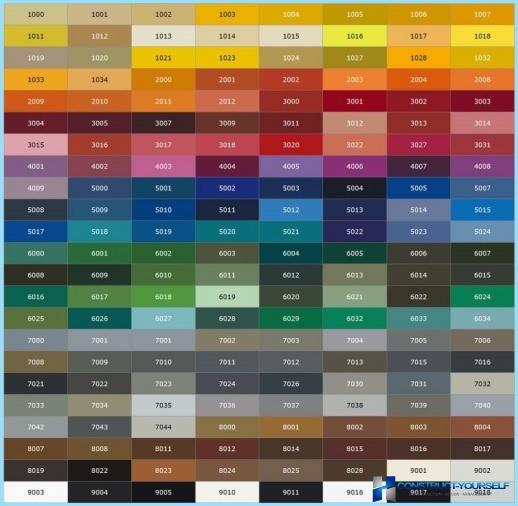
Description and marking of emulsion paints ↑
A distinctive feature of the emulsion of the group is to dilute its products with water, the resulting composition is a stable emulsion applied to the walls. This quality is indicated in the marking paint of the letters V, VE, VD.
Among the advantages of the group include:
- efficiency;
- a high level of ecological and fire safety;
- a wide range of applications, including pre-primed metal surface.
Emulsion products are divided into the following subgroups:
- acrylic;
- polyvinyl acetate;
- latex;
- aqueous dispersion;
- silicone and latex.
Labeling of water-based paints does not always apply. Often on the banks of the characteristics of the products (base, scope) described in words.
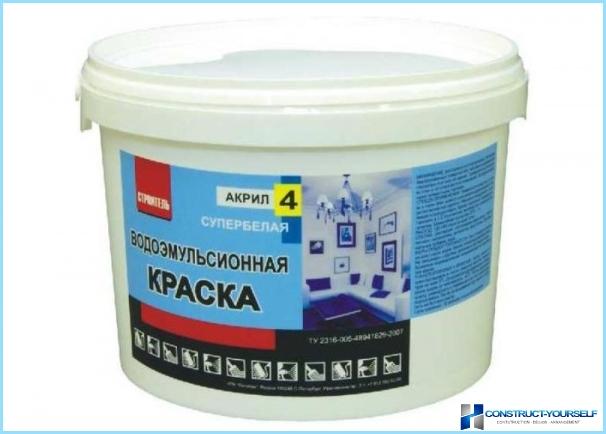
Types of coatings alkyd group ↑
Alkyd resin – a alkyd-based coatings group. These products are designed for coating wood, metal and plaster surfaces, are divided into oil paint and enamel. The composition of oil paints are necessarily different varnish. They long to dry, possess toxic properties and are often operated for outdoor use.
Structure of the enamel varnish is applied that promote the formation of a glossy surface after drying. Work this type of coatings are carried out inside and outside the premises. The treated surface dries within hours, has a corrosion resistance and water repellent properties.
Description and encryption of oil products ↑
Linseed oil used in the manufacture of paint, traditionally made from oil. Currently, manufacturers are increasingly are turning to synthetic substitutes due to the long period of drying of natural products. Depending on the ratio of the composition of natural oils, solvent and driers, drying oils are:
- natural;
- oksol;
- combined;
- alkyd;
- pentaftalevyh.
In marking oil paints domestic manufacturer is required to present the letters MA. In addition to lettering marking oil colors contains numbers. The first is file scope (can vary from 1 to 9), the second – on the composition of the varnish. To do this, the marking of oil paints provided for the following positions:
- 1 – natural;
- 2 – oksol;
- 3 – glyptal;
- 4 – pentaphthalic;
- 5 – composite.
Examples of markings for oil paints:
Paint MA-15 – oil paint for exterior use based on linseed oil «composite».
- Enamel PF-218ХС white:
PF – as the basis used pentaphthalic drying oil;
- 2 – for internal works;
- 18 – the serial number;
- KHS – apply drying cold.
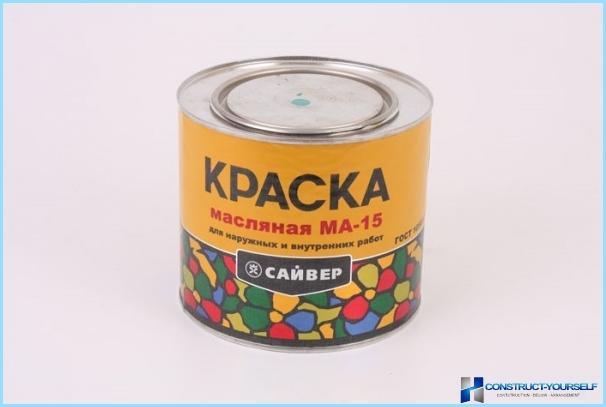
Other types of coatings ↑
In silicate-based all-liquid glass, they are incompatible with acrylic and alkyd products. Colors is not very diverse. Based on adhesive products are organic polymers. They arrive to the consumer in dry form and diluted with water before beginning work. This product group can be applied only in dry rooms.
The deciphering of the marking powder paint, as well as options of the symbols is explained below:
P-EP-PL-1323 RAL 9016 glossy shagreen 12211-00001
| Symbol | That means | transcript | Possible options |
| P | Material | Paint powder | |
| EP-PL | Chemical composition | Epoxy polyester | |
| One | Scope | Weatherproof | From 1 to 9 |
| Three hundred twenty three | Serial number | ||
| RAL 9016 | Color | ||
| Shagreen | Surface type | Shagreen | Smooth, sharkskin, moire, antique |
| Glossy | Gloss | Glossy | Matte, semi-matte, deep matte, glossy |
| Twelve thousand two hundred eleven | Article | 1 – type of foaming agent | 1 – epoxy-polyester 2-4 – polyester |
| 22 – type of surface | 11-14 – smooth 21-26 – shagreen 31-33 – Antik 41-44 moire | ||
| 1 – mode of hardening | From 1 to 9 | ||
| 1 – method of applying | 1 – corona/tribo 2 – crown 3 – tribo | ||
| 00001 | Internal number |
Recently, the company engaged in the production of materials that do not always adhere to approved Standards and labelling, using their own notation.

